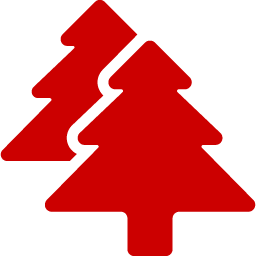I Casoni e la Laguna
 Naturalistici
Naturalistici
Descrizione
La laguna di Caorle, una delle più grandi dell’Alto Adriatico, è un'area naturalistica protetta, dove una ricchissima flora, moltissimi uccelli migratori e stanziali e una grande varietà di pesci trovano un luogo ideale per la vita e la riproduzione.
Nel passato la laguna costituiva il luogo in cui il pescatore trascorreva con la famiglia gran parte della sua vita dedita alla pesca. Le abitazioni erano i casoni, tipiche costruzioni in legno e canna palustre, visibili ancora oggi, ad esempio, lungo l'itinerario ciclabile che parte all'altezza dello stadio comunale (piazzale Olimpia), prosegue per Strada Palangon fino all' “Isola dei pescatori” e da qui, su una strada ciclopedonale che costeggia la laguna, giunge a Falconera: un itinerario molto caratteristico.
Questo meraviglioso paesaggio era ben noto a Ernest Hemingway, scrittore americano premio Nobel nel 1954 e amico del barone Franchetti. I due avevano in comune la passione per la caccia ed il nobile veneziano ebbe l’occasione di ospitare in più occasioni lo scrittore a San Gaetano, villaggio sulla laguna di Caorle, dove Franchetti possedeva terre, una casa padronale e una casa per la caccia. Le giornate trascorse a caccia in laguna hanno ispirato alcune pagine del romanzo di Hemingway “Di là dal fiume e tra gli alberi” (1950), in cui lo scrittore ci regala la miglior descrizione della laguna di Caorle in inverno.
Per chi non fosse organizzato con una barca propria, dal porto peschereccio e dal canale Saetta partono, durante l’estate, delle imbarcazioni turistiche che, oltre ad un suggestivo percorso nel paesaggio articolato di canali, ghebi, delle terre emerse e delle barene sommerse dal ritmo delle maree, offrono spesso una piacevole sosta ai casoni.
Vallevecchia, in località Brussa, è un’area litoranea di bonifica, situata tra Caorle e Bibione. Sito di notevole interesse ecologico, denominato Sito di Interesse Comunitario, è da anni al centro di un importante intervento di riqualificazione ambientale. Il paesaggio è costituito da una zona agraria-lagunare, una pineta, le dune e il litorale sabbioso, dove è possibile osservare una flora assai varia e un'interessante fauna. Qui si trova anche il nuovo Museo Ambientale (MAV).
The lagoon of Caorle is a protected naturalistic area, one of the largest in the upper Adriatic. In it a wide range of plants and animals, especially birds and fish, find the ideal place to thrive and breed. In the past there was abundance of fish in its waters and the fisherman, together with his family, used to spend there most of his life devoted to fishing. Their dwelling were the so called casoni, lodges made of wood and swamp canes. They are still to be seen, for example by taking the cycling route that starts at the end of Levante beach and runs along the lagoon: a typical local route.
Ernest Hemingway, the famous American writer and Nobel Prize winner in 1954, knew this landscape well. In Venice he met the nobleman baron Franchetti, with whom he shared the passion for duck hunting. This is why Franchetti often took Hemingway to San Gaetano, where the Venetian nobleman owned some estates, as well a villa and a hunting lodge. From this experience the American writer drew inspiration for some pages of his short novel “Across the River and into the Trees”, in which he describes Caorle and its lagoon with great vividness and wonder.
During the summer, organized trips by boat can be joined, which offer non only sightseeing tours around this beautiful landscape characterized by canals and sandbanks emerging or submerging according to the tide, but also a pleasant stop in the casoni.
Vallevecchia, located in Brussa, is a coastal area between Caorle and Bibione where a remarkable environmental intervention has been implemented. It is made by different biotopes: cultivated land, lagoon, pinewood, dunes and sand coast. It is possible to see different species of vegetation and to observe a range of interesting animal species. Upon reservation, you can visit there the MAV, Natural Environment Museum.
Die Lagune von Caorle ist ein Naturschutzgebiet von europäischen Interesse, eines der größten an der oberen Adria, wo eine reiche Flora, viele Zugvögel, Standvögel und eine Vielzahl von Fischen einen idealen Ort zum Leben und der Fortpflanzung finden. Die Lagune ist heute ein unbewohntes Gebiet, als Folge der großen Trockenlegungsarbeiten die in den letzten Jahrhunderten durchgeführt wurden, während es in der Vergangenheit der Ort war, wo der Fischer mit seiner Familie die meiste Zeit seines Lebens verbrachte.
Die Fischer verließen ihre Häuser in der Lagune, die sogenannten Casoni: traditionelle Häuser aus Holz und Schilf.
Diese Konstruktionen kann man heute noch sehen, wenn man dem Fuß- und Fahrradweg am Ende vom Oststrand, entlang der Lagune bis zu der sogenannten "Insel der Fischer" folgt. Alternativ kann man auf der Höhe des Gemeindestadions die nicht asphaltierte Straße am Kanal Saetta entlang nehmen.
Diese Landschaft war Ernest Hemingway, dem berühmten amerikanischen Schriftsteller und Nobelpreisträger 1954, der den Baron Franchetti in Venedig kennen gelernt hatte, gut bekannt; die beiden hatten gemeinsam eine Leidenschaft für die Jagd, so dass der venezianische Adelige den Schriftsteller mehrmals nach San Gaetano begleitete, das an der Lagune und nur wenige Kilometer von Caorle entfernt im Landesinneren lag, wo Franchetti Grundstücke, ein Herrenhaus und ein Jagdhaus besaß.
Dieses Erlebnis hat einige Seiten in Hemingways Roman "Über den Fluss und in die Wälder" inspiriert, in dem der Schriftsteller die Lagune von Caorle mit großer Poesie beschreibt.
Für diejenigen, die kein eigenes Boot besitzen, kann man vom Hafen von Caorle mit organisierten Schiffen den ganzen Sommer über eine faszinierende Reise in die Landschaft der Lagune mit Aufenthalt in einer der Fischerhütte - Casoni machen.
Vallevecchia, im Ortsteil Brussa, ist ein urbar gemachtes Küstengebiet, das zwischen Caorle und Bibione liegt und von großer ökologischer Bedeutung ist und in dem eine Umweltsanierung durchgeführt wurde.
Die Landschaft besteht aus einem Lagunenland, einem Pinienwald, Dünen und Sandstrände. Man kann dort eine Vegetation und eine große Vielfalt an Flora und abwechslungsreicher und interessanter Fauna bewundern. Hier befindet sich auch das neue Umwelt Museum (MAV).



